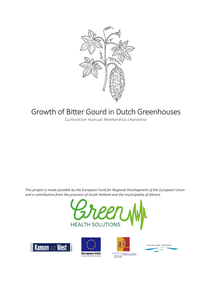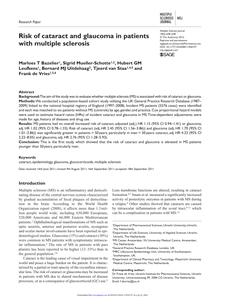Background: Drug resistance is a major problem in ovarian cancer. Triggering apoptosis using death ligands such as tumour necrosis factor-related apoptosis inducing ligand (TRAIL) might overcome chemoresistance. Methods: We investigated whether acquired cisplatin resistance affects sensitivity to recombinant human (rh) TRAIL alone or in combination with cisplatin in an ovarian cancer cell line model consisting of A2780 and its cisplatin-resistant subline CP70. Results: Combining cisplatin and rhTRAIL strongly enhanced apoptosis in both cell lines. CP70 expressed less caspase 8 protein, whereas mRNA levels were similar compared with A2780. Pre-exposure of particularly CP70 to cisplatin resulted in strongly elevated caspase 8 protein and mRNA levels. Caspase 8 mRNA turnover and protein stability in the presence or absence of cisplatin did not differ between both cell lines. Cisplatin-induced caspase 8 protein levels were essential for the rhTRAIL-sensitising effect as demonstrated using caspase 8 small-interfering RNA (siRNA) and caspase-8 overexpressing constructs. Cellular FLICE-inhibitory protein (c-FLIP) and p53 siRNA experiments showed that neither an altered caspase 8/c-FLIP ratio nor a p53-dependent increase in DR5 membrane expression following cisplatin were involved in rhTRAIL sensitisation. Conclusion: Cisplatin enhances rhTRAIL-induced apoptosis in cisplatin-resistant ovarian cancer cells, and induction of caspase 8 protein expression is the key factor of rhTRAIL sensitisation. © 2011 Cancer Research UK All rights reserved.
DOCUMENT
Glucocorticoids (GCs), such as prednisolone (PRED), are widely prescribed anti-inflammatory drugs, but their use may induce glucose intolerance and diabetes. GC-induced beta cell dysfunction contributes to these diabetogenic effects through mechanisms that remain to be elucidated. In this study, we hypothesized that activation of the unfolded protein response (UPR) following endoplasmic reticulum (ER) stress could be one of the underlying mechanisms involved in GC-induced beta cell dysfunction. We report here that PRED did not affect basal insulin release but time-dependently inhibited glucose-stimulated insulin secretion in INS-1E cells. PRED treatment also decreased both PDX1 and insulin expression, leading to a marked reduction in cellular insulin content. These PRED-induced detrimental effects were found to be prevented by prior treatment with the glucocorticoid receptor (GR) antagonist RU486 and associated with activation of two of the three branches of the UPR. Indeed, PRED induced a GR-mediated activation of both ATF6 and IRE1/XBP1 pathways but was found to reduce the phosphorylation of PERK and its downstream substrate eIF2α. These modulations of ER stress pathways were accompanied by upregulation of calpain 10 and increased cleaved caspase 3, indicating that long term exposure to PRED ultimately promotes apoptosis. Taken together, our data suggest that the inhibition of insulin biosynthesis by PRED in the insulin-secreting INS-1E cells results, at least in part, from a GR-mediated impairment in ER homeostasis which may lead to apoptotic cell death.
DOCUMENT
Study goal: This study was carried out to answer the following research question: which motivation do healthy volunteers have to participate in phase I clinical trials? - Methods: A literature search was done through Google Scholar and Academic Search Premier, followed by three interviews with volunteers who had recently concluded their participation in a (non-commercial) phase I trial. - Results: Our literature search revealed mainly commercial motives for volunteers to participate in phase I clinical trials. The interviews (with volunteers in a non-commercial trial) showed that other factors may also play a decisive role, such as: (1) wish to support the investigator (2) wish to contribute to science, (3) access to more/better health care (4) sociability: possibility to relax and to communicate with other participants (5) general curiosity. Precondition is that risks and burden are deemed acceptable. - Conclusions: financial remuneration appears to be the predominant motive to participate voluntarily in a clinical trial. Other reasons were also mentioned however, such as general curiosity, the drive to contribute to science and the willingness to help the investigator. In addition, social reasons were given such as possibility to relax and to meet other people. Potential subjects state that they adequately assess the (safety) risks of participating in a trial as part of their decision process.
DOCUMENT

Background: Adverse outcome pathway (AOP) networks are versatile tools in toxicology and risk assessment that capture and visualize mechanisms driving toxicity originating from various data sources. They share a common structure consisting of a set of molecular initiating events and key events, connected by key event relationships, leading to the actual adverse outcome. AOP networks are to be considered living documents that should be frequently updated by feeding in new data. Such iterative optimization exercises are typically done manually, which not only is a time-consuming effort, but also bears the risk of overlooking critical data. The present study introduces a novel approach for AOP network optimization of a previously published AOP network on chemical-induced cholestasis using artificial intelligence to facilitate automated data collection followed by subsequent quantitative confidence assessment of molecular initiating events, key events, and key event relationships. Methods: Artificial intelligence-assisted data collection was performed by means of the free web platform Sysrev. Confidence levels of the tailored Bradford-Hill criteria were quantified for the purpose of weight-of-evidence assessment of the optimized AOP network. Scores were calculated for biological plausibility, empirical evidence, and essentiality, and were integrated into a total key event relationship confidence value. The optimized AOP network was visualized using Cytoscape with the node size representing the incidence of the key event and the edge size indicating the total confidence in the key event relationship. Results: This resulted in the identification of 38 and 135 unique key events and key event relationships, respectively. Transporter changes was the key event with the highest incidence, and formed the most confident key event relationship with the adverse outcome, cholestasis. Other important key events present in the AOP network include: nuclear receptor changes, intracellular bile acid accumulation, bile acid synthesis changes, oxidative stress, inflammation and apoptosis. Conclusions: This process led to the creation of an extensively informative AOP network focused on chemical-induced cholestasis. This optimized AOP network may serve as a mechanistic compass for the development of a battery of in vitro assays to reliably predict chemical-induced cholestatic injury.
DOCUMENT

Bitter gourd is also called sopropo, balsam-pear, karela or bitter melon and is a member of the cucumber family (Cucurbitaceae). It is a monoecious, annual, fast-growing and herbaceous creeping plant. The wrinkled fruit of the bitter gourd is consumed as a vegetable and medicine in Asia, East Africa, South America and India. The aim of this bitter gourd cultivation manual is to make this cultivation accessible to Dutch growers and in this way be able to meet market demand. In addition, this cultivation manual aims to provide insight into the standardized production of the medicinal ingredients in the fruit.
DOCUMENT

The aim of the study was to evaluate whether multiple sclerosis (MS) is associated with risk of cataract or glaucoma. We conducted a population-based cohort study utilizing the UK General Practice Research Database (1987–2009) linked to the national hospital registry of England (1997–2008). Incident MS patients (5576 cases) were identified and each was matched to six patients without MS (controls) by age, gender, and practice. Cox proportional hazard models were used to estimate hazard ratios (HRs) of incident cataract and glaucoma in MS. Time-dependent adjustments were made for age, history of diseases and drug use.
DOCUMENT

From PLoS website: In general, dietary antigens are tolerated by the gut associated immune system. Impairment of this so-called oral tolerance is a serious health risk. We have previously shown that activation of the ligand-dependent transcription factor aryl hydrocarbon receptor (AhR) by the environmental pollutant 2,3,7,8-tetrachlorodibenzo-p-dioxin (TCDD) affects both oral tolerance and food allergy. In this study, we determine whether a common plant-derived, dietary AhR-ligand modulates oral tolerance as well. We therefore fed mice with indole-3-carbinole (I3C), an AhR ligand that is abundant in cruciferous plants. We show that several I3C metabolites were detectable in the serum after feeding, including the high-affinity ligand 3,3´-diindolylmethane (DIM). I3C feeding robustly induced the AhR-target gene CYP4501A1 in the intestine; I3C feeding also induced the aldh1 gene, whose product catalyzes the formation of retinoic acid (RA), an inducer of regulatory T cells. We then measured parameters indicating oral tolerance and severity of peanut-induced food allergy. In contrast to the tolerance-breaking effect of TCDD, feeding mice with chow containing 2 g/kg I3C lowered the serum anti-ovalbumin IgG1 response in an experimental oral tolerance protocol. Moreover, I3C feeding attenuated symptoms of peanut allergy. In conclusion, the dietary compound I3C can positively influence a vital immune function of the gut.
MULTIFILE
From the publisher: "Background: The introduction of whole new foods in a population may lead to sensitization and food allergy. This constitutes a potential public health problem and a challenge to risk assessors and managers as the existing understanding of the pathophysiological processes and the currently available biological tools for prediction of the risk for food allergy development and the severity of the reaction are not sufficient. There is a substantial body of in vivo and in vitro data describing molecular and cellular events potentially involved in food sensitization. However, these events have not been organized in a sequence of related events that is plausible to result in sensitization, and useful to challenge current hypotheses. The aim of this manuscript was to collect and structure the current mechanistic understanding of sensitization induction to food proteins by applying the concept of adverse outcome pathway (AOP). Main body: The proposed AOP for food sensitization is based on information on molecular and cellular mechanisms and pathways evidenced to be involved in sensitization by food and food proteins and uses the AOPs for chemical skin sensitization and respiratory sensitization induction as templates. Available mechanistic data on protein respiratory sensitization were included to fill out gaps in the understanding of how proteins may affect cells, cell-cell interactions and tissue homeostasis. Analysis revealed several key events (KE) and biomarkers that may have potential use in testing and assessment of proteins for their sensitizing potential. Conclusion: The application of the AOP concept to structure mechanistic in vivo and in vitro knowledge has made it possible to identify a number of methods, each addressing a specific KE, that provide information about the food allergenic potential of new proteins. When applied in the context of an integrated strategy these methods may reduce, if not replace, current animal testing approaches. The proposed AOP will be shared at the www.aopwiki.org platform to expand the mechanistic data, improve the confidence in each of the proposed KE and key event relations (KERs), and allow for the identification of new, or refinement of established KE and KERs." Authors: Jolanda H. M. van BilsenEmail author, Edyta Sienkiewicz-Szłapka, Daniel Lozano-Ojalvo, Linette E. M. Willemsen, Celia M. Antunes, Elena Molina, Joost J. Smit, Barbara Wróblewska, Harry J. Wichers, Edward F. Knol, Gregory S. Ladics, Raymond H. H. Pieters, Sandra Denery-Papini, Yvonne M. Vissers, Simona L. Bavaro, Colette Larré, Kitty C. M. Verhoeckx and Erwin L. Roggen
LINK